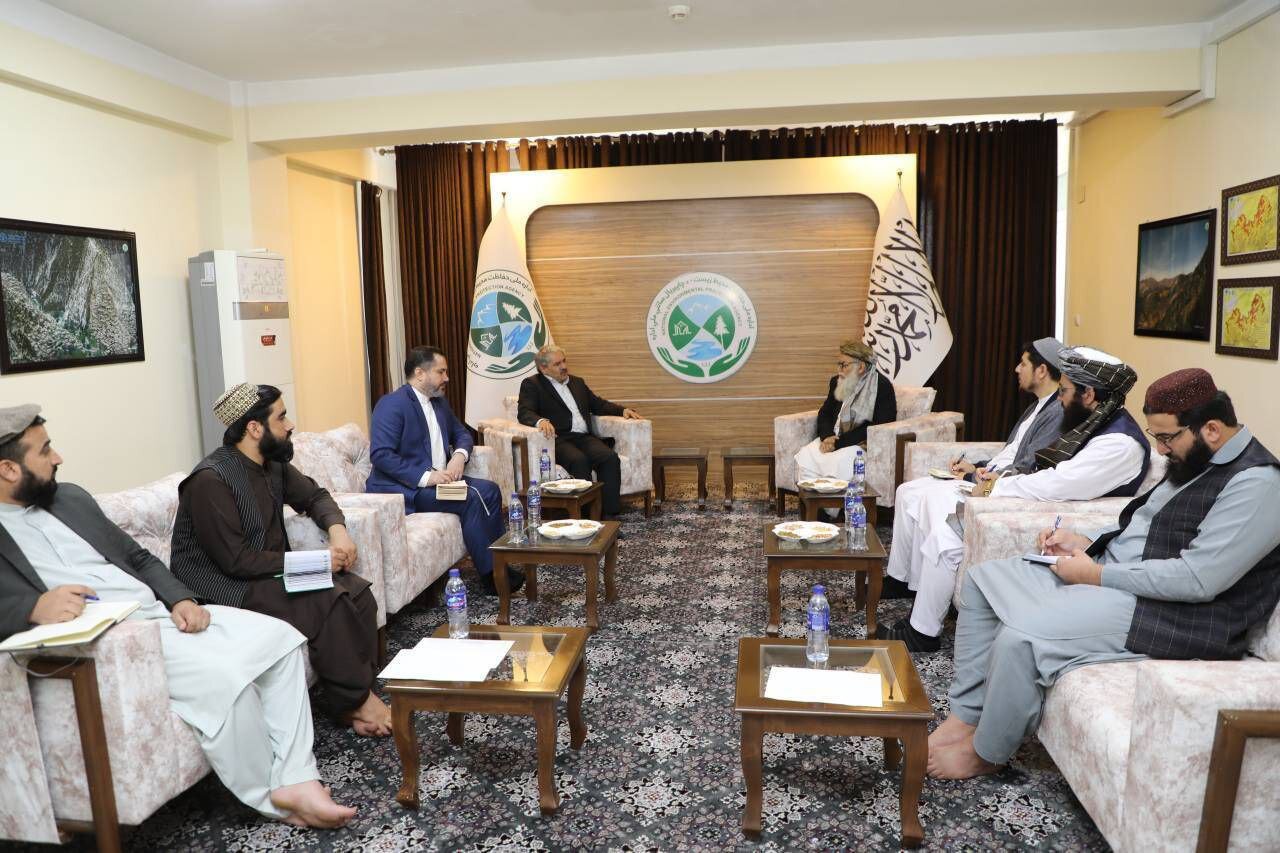Tehran, Kabul discuss ways to enhance environmental co-op

TEHRAN – Iranian and Afghan officials have explored avenues to expand collaboration in the areas related to environmental protection, especially border wetlands and rivers.
Ahmad-Reza Lahijanzadeh, the deputy head of the Department of Environment for Marine and Wetlands affairs, and Mawlawi Matiul Haq Khalis, the head of the National Environmental Protection Agency (NEPA) of Afghanistan, met on Tuesday in Kabul.
The meeting focused on ways to address the impacts of climate change, sharing expertise and knowledge, training technical staff in Afghanistan, Hamoun wetlands (transboundary wetlands on the Iran-Afghan border), sand and dust storms caused by the drying up of wetlands, the wetlands’ water rights, as well as conducting joint and international studies and research projects for the restoration of wetlands.
During the meeting, Matiul Haq Khalis highlighted that Afghanistan is severely affected by climate change. “Droughts have increased, and water scarcity has forced our people to be displaced,” he noted. The official called for regional and international cooperation to address this crisis.
For his part, Lahijanzadeh voiced Iran’s full readiness to foster collaboration with Afghanistan to combat climate change and its impacts, share expertise, and train professional staff.
Environmental diplomacy needs to be strengthened
Being transboundary, many complicated environmental challenges can be addressed through environmental diplomacy, which means negotiations among two or more countries.
Environmental diplomacy is used globally to settle problems such as conflicts over sources of energy, water, and climate change, IRNA reported.
The fact that all the countries share the same environment necessitates fostering environmental diplomacy to settle disputes over water resources, environmental pollution, and climate change impacts.
Environmental diplomacy is an effective and required tool to mitigate and eliminate the severe consequences by fair distribution of responsibilities among involved countries as they present their national interests and solutions.
Sand and dust storms (DSDs) are a typical example of meteorological hazards in West Asia, where many countries are involved, as some generate them and some others are affected by them.
SDSs hit countries such as Saudi Arabia, Iraq, Syria, Turkey, Iran, and sometimes parts of Azerbaijan, Turkmenistan, and even Afghanistan and Pakistan.
These dust particles have devastating impacts on respiratory health and ecosystems, resulting in the closure of airports, schools, and offices, affecting electricity transmission infrastructures, and bringing about economic losses.
Removing pollution from the Aras River and securing the Hirmand River water rights, as well as some wetlands, are other examples where environmental policies have been used to resolve the conflicts.
The
The Tehran Convention is a big achievement whereby the Caspian Sea littoral states protect the Caspian environment from all sources of pollution, but also targets the preservation, restoration, and protection of the Caspian Sea species and habitats.
Therefore, to mitigate climate change impacts and achieve sustainable development goals, environmental policy is required to be strengthened to help Iran, as well as its neighboring countries, benefit from available resources and secure our rights at the international level.
Ministry of Foreign Affairs, in cooperation with other executive bodies such as the ministries of energy, industry, and agriculture, as well as the Department of Environment, can establish a center to focus on specific missions and follow up on discussions and goals in line with national interests and improve the living conditions of citizens through environmental diplomacy.
MT/MG
Leave a Comment